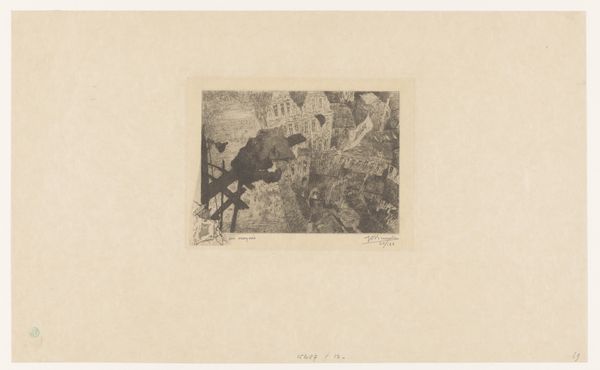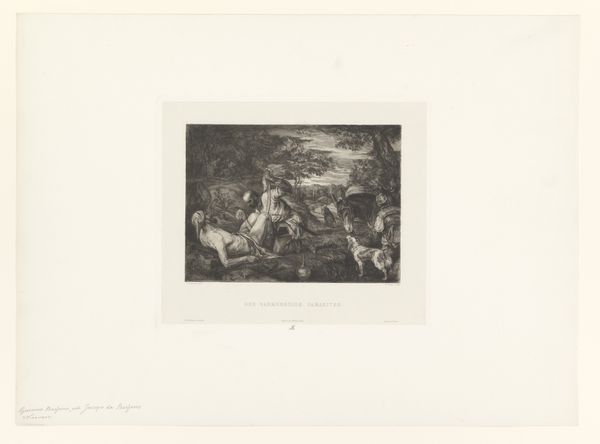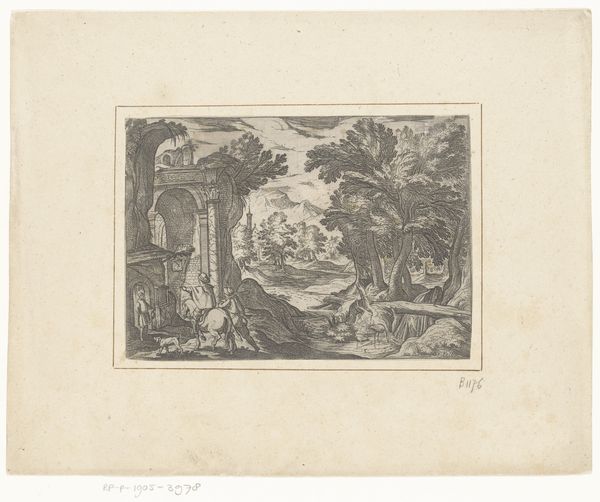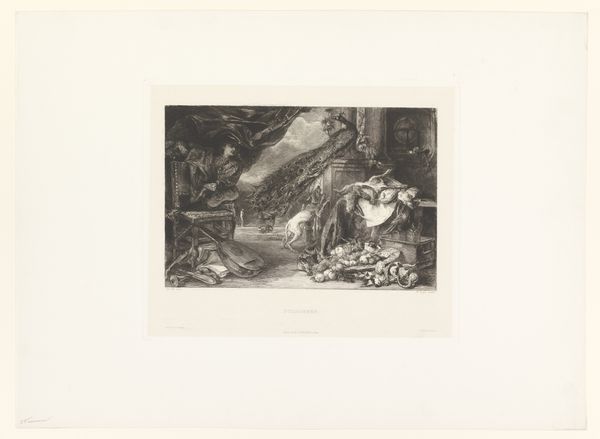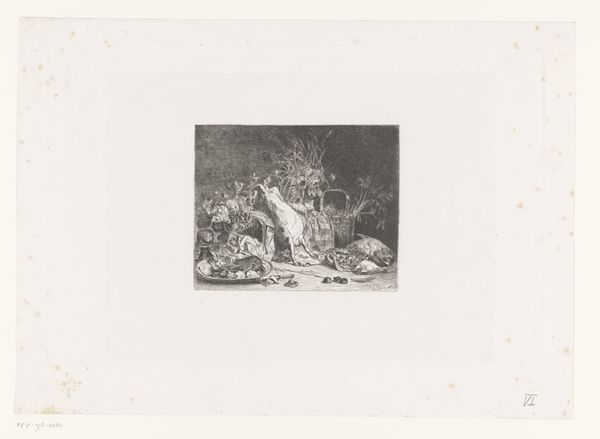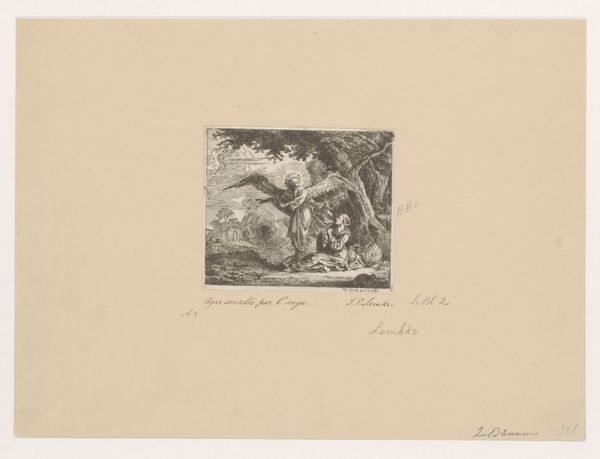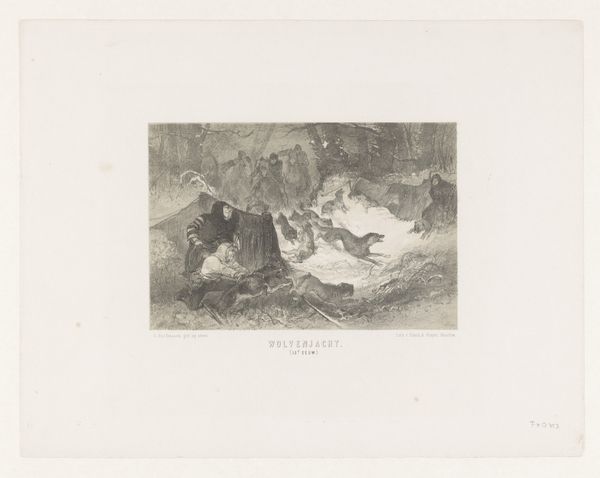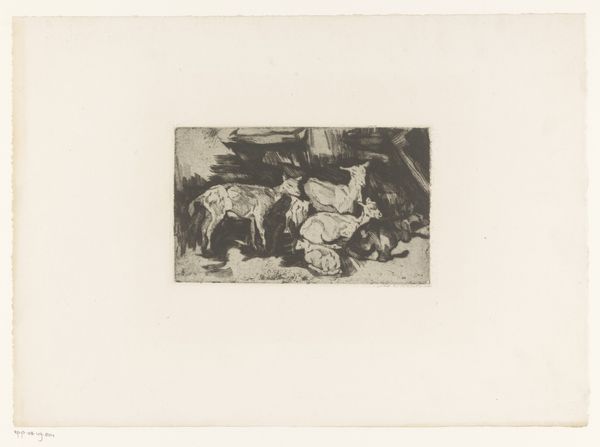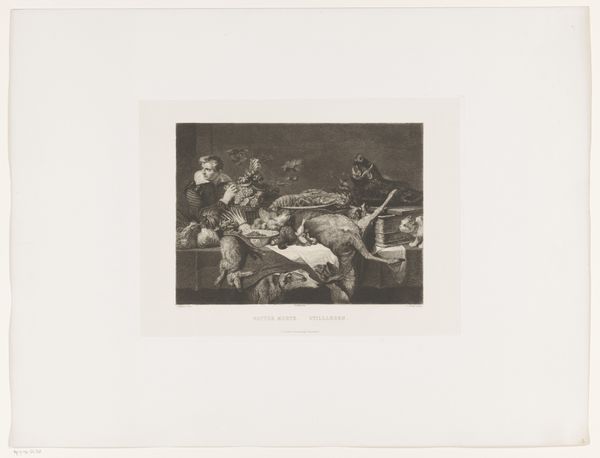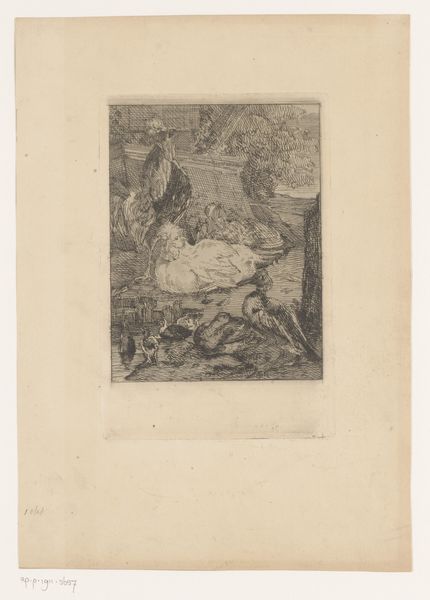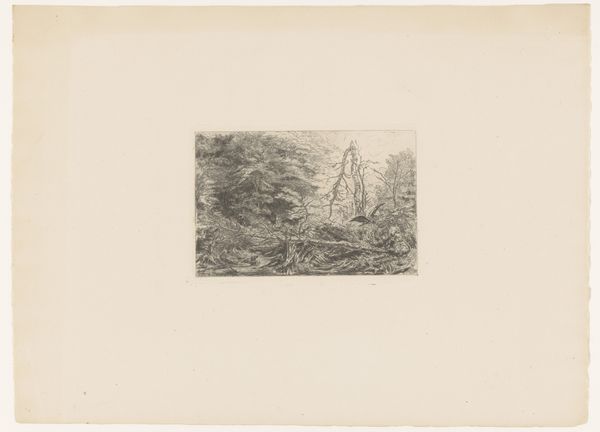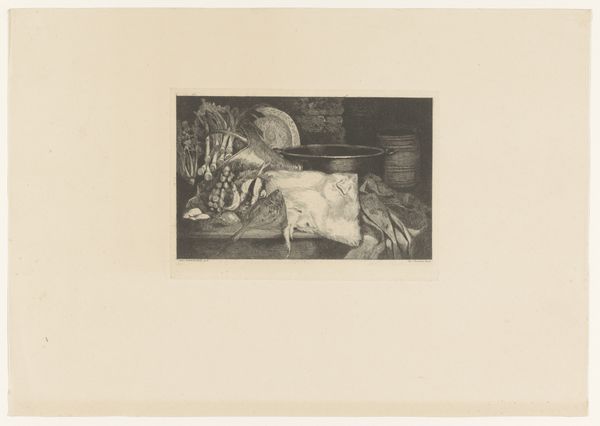
Dimensions: height 175 mm, width 233 mm
Copyright: Rijks Museum: Open Domain
Curator: Immediately striking, isn't it? There's something incredibly melancholic about the way the light plays across these scattered objects. Editor: It's like looking into a forgotten corner of time itself. This etching, made sometime between 1870 and 1931 by Willem Bastiaan Tholen, is titled "Still Life with Falling and Broken Objects" and can be found right here at the Rijksmuseum. It employs a variety of printing techniques, including etching and engraving. Curator: "Falling and broken" is right! It’s like the traditional vanitas theme has literally collapsed. We’re so used to these meticulously arranged still lifes, and Tholen gives us chaos. It's intriguing because we usually understand vanitas paintings as moral lessons framed through social norms around the art world. To me, this piece feels different from what the public came to expect from Dutch Golden Age artists, because it lacks that high level of technical prowess and a neat surface appearance. I wonder about how that shift might have impacted Tholen's reputation. Editor: Definitely. The symbols themselves are quite potent too: the hourglass, precariously perched, a stark reminder of time slipping away. We also have an overturned balance, signaling justice disrupted perhaps, or a world out of kilter? What I find especially evocative is how Tholen uses the monochrome palette to deepen that feeling of desolation and loss. The objects don't pop out as a crystal vase might, they become enmeshed into the message itself. Curator: That desolation echoes in art criticism of the time, where artists pushing boundaries faced censure. Was this depiction of 'brokenness' also a reflection on the contemporary art scene itself? Where perfection gave way to the incomplete, a comment on the shifting institutional and cultural values? Editor: Absolutely. And perhaps it's a reflection on the ephemerality of those values too, as hinted at by those scattered documents in the artwork, the symbols representing a system in flux and, ultimately, decay. Art imitates life, and, if we allow for speculation, perhaps Tholen had those turbulent concepts on his mind. Curator: An unconventional approach to familiar symbolism which reflects upon how social shifts affect what and how artists chose to comment on contemporary culture, fascinating. Editor: It certainly does give you pause, a somber still life that makes one contemplate what symbols persist or crumble as eras change.
Comments
No comments
Be the first to comment and join the conversation on the ultimate creative platform.
